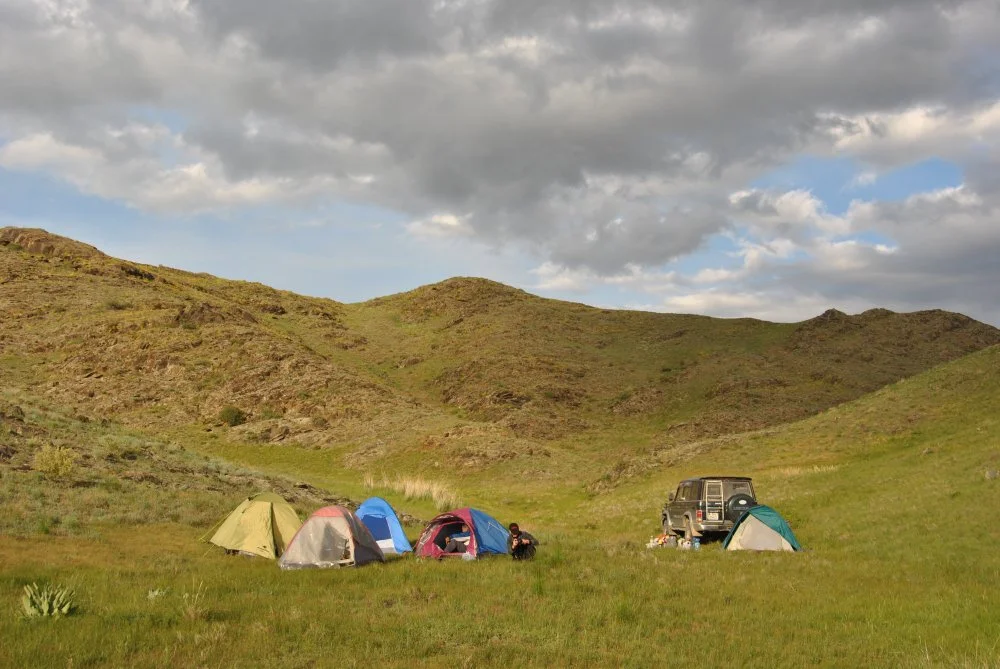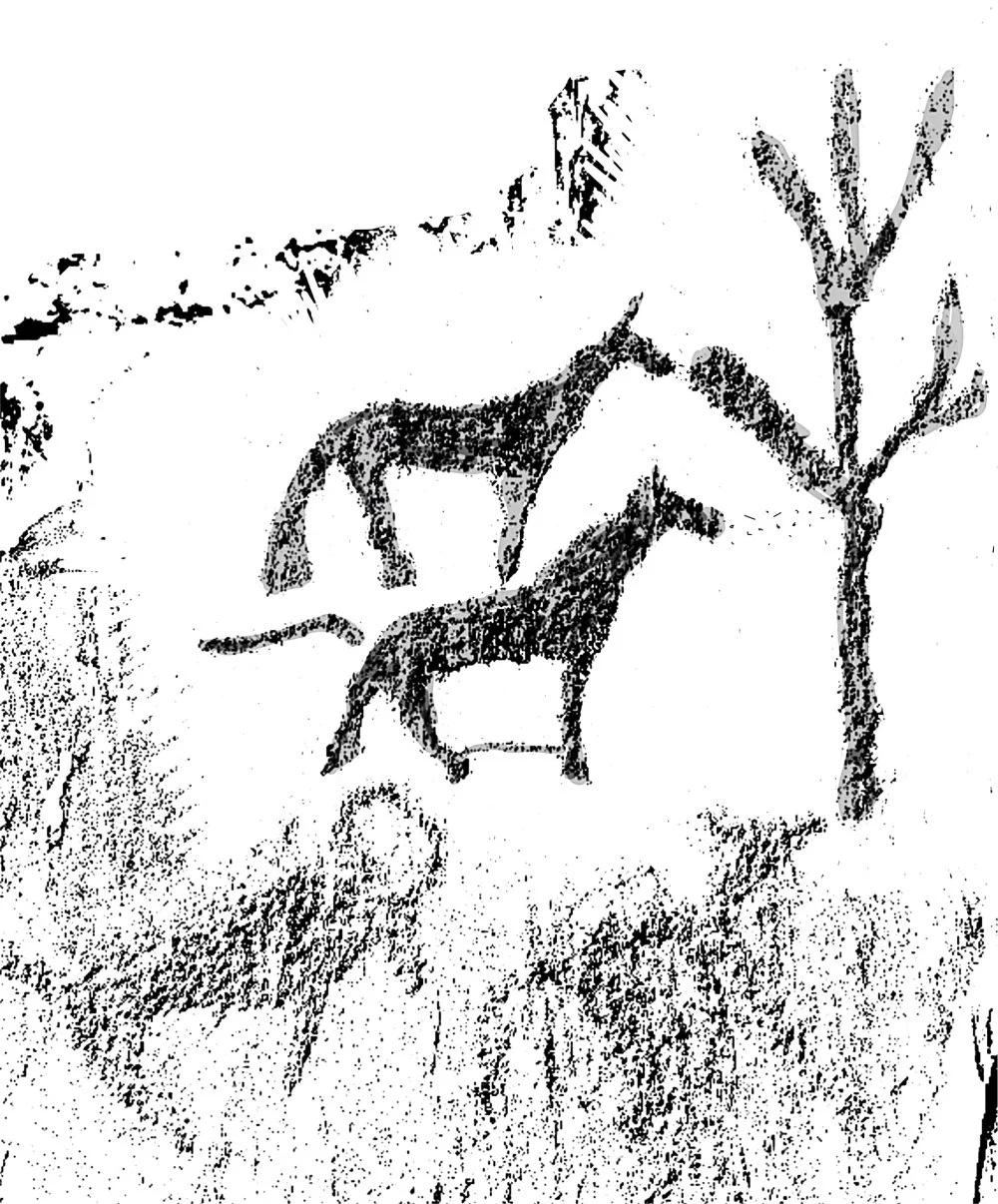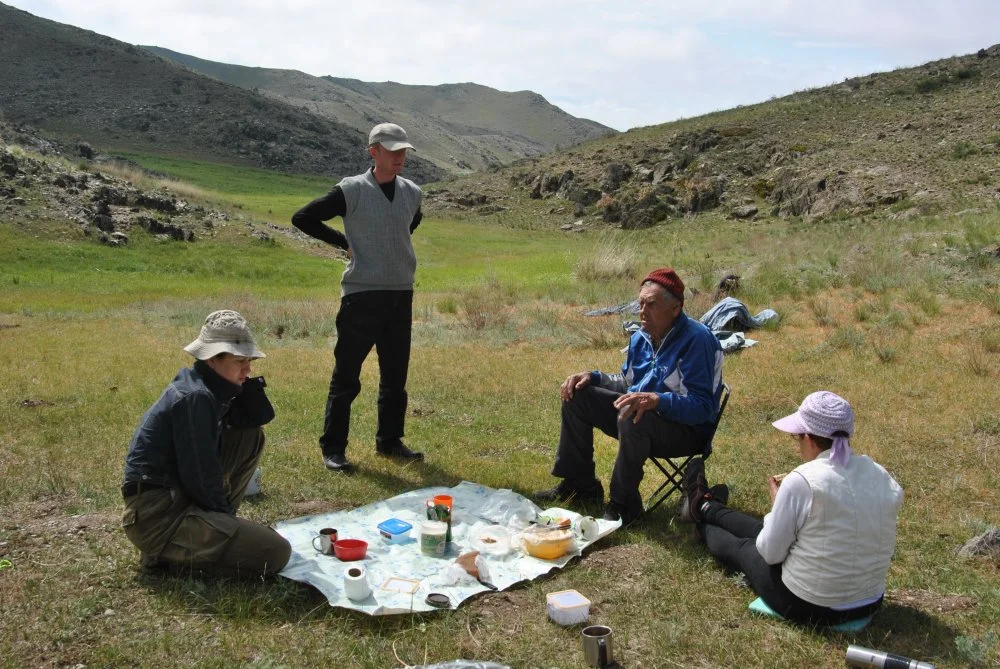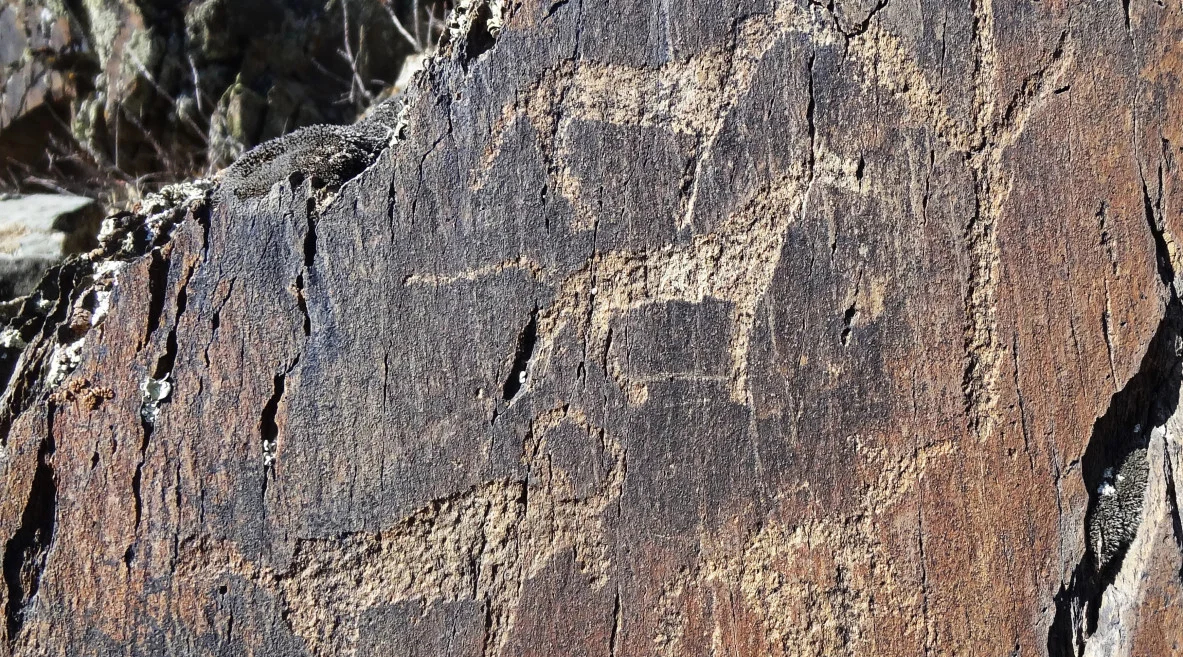Many people know that Kazakhs call the North Star Temir Qazyq (meaning ‘iron peg’) and that the two nearby stars represent the tethered celestial horses, Aqboz at and Kökboz at. The origin of this legend remains uncertain, even among scientists, though several theories exist. And in the petroglyphs of Kazakhstan, a scene has been recorded and described that immediately brings this legend to mind. The image is part of a large and complex composition located in the Quljabasy Sanctuary in the Chuy Mountains of the Jambyl region.

Kulzhabasy/Olga Gumirova
The cluster containing this petroglyph is hidden deep within a cozy gorge sheltered from buffeting winds, where a stream of crystal-clear water flows, its banks densely overgrown with mint and other fragrant steppe herbs. In the upper reaches of the gorge, there was once a sizable multi-period settlement, and although no excavations have been conducted yet, surface finds suggest that people lived there from the Bronze Age to modern times.

Field camp of archaeologists in Kulzhabasy/Olga Gumirova
On the upper part of a massive slab, measuring approximately 180 cm by 200 cm, two horses tied to a hitching post have been depicted. One of the horses is hobbled, which was a common way to represent sacrificial animals in the past. And the hitching post, upon closer inspection, is no ordinary one—it’s a highly stylized tree with four branches, suggesting it could represent the World Tree. Surely this is enough evidence to consider this petroglyph cosmic in nature.

World tree and two horses. Kulzhabasy. Drawing/Olga Gumirova
Detailed astronomical studies have not yet been conducted, but if you continue with an imaginary line up from the trunk of the petroglyph to the zenith of the starry sky, it would eventually intersect with the point where the North Star is located, and it is unlikely that this is a mere coincidence. It is also unclear whether this image is an illustration of some very ancient legend or whether it serves a practical purpose, like a guide for travelers across the steppe who, like sailors at sea, often navigated by the stars.

Restіng. Team of volunteers with the leader A.N. Maryashev/Olga Gumirova
Archeologists date this petroglyph to the early Iron Age, between the fifth to the seventh centuries BCE. Therefore, it is possible that the legend of the celestial hitching post with star horses tied to it has been passed down to us by the Saka people.

Flora of the Chu Ili Mountains/Olga Gumirova




